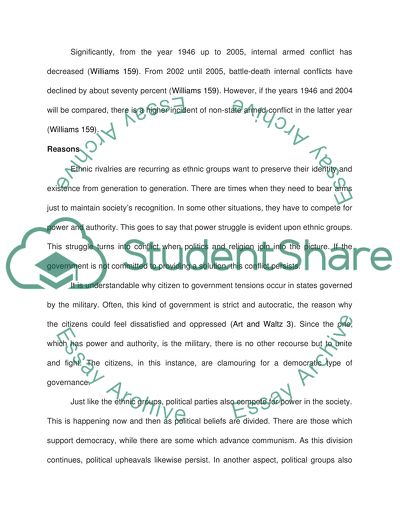What are the trends in non-state conflict over the past 20-30 years Research Paper. Retrieved from https://studentshare.org/statistics/1581713-what-are-the-trends-in-non-state-conflict-over-the-past-20-30-years-or-for-whatever-time-period-you-have-data
What Are the Trends in Non-State Conflict over the past 20-30 Years Research Paper. https://studentshare.org/statistics/1581713-what-are-the-trends-in-non-state-conflict-over-the-past-20-30-years-or-for-whatever-time-period-you-have-data.


